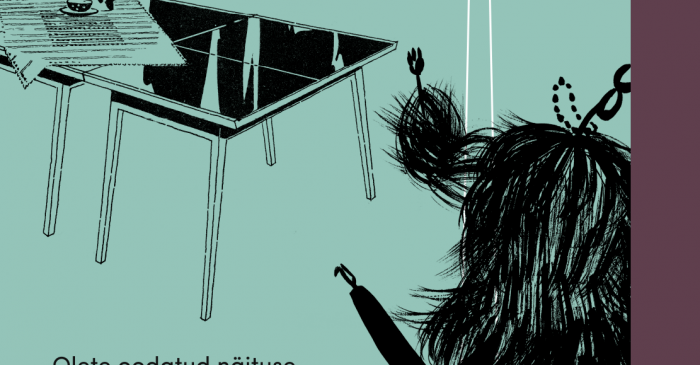
According to local time. A century of the Estonian home in the city
Floor
14.06. – 07.10.2018
Designing our homes, our personal space usually takes years and can be either a particular or a more random process. We almost don’t even notice the familiar things in our homes. Yet the layout of rooms, choice of furniture, colours and textiles are all part of our everyday culture, which, throughout the 20th century until today, we have always tried to cultivate, endlessly handing out instructive material in print and newspapers. The arrival of the modern housing was the most important keyword in modern architecture in the 20th century because it was believed that societal change could only emerge from a change in everyday life. The development of technology has continually maintained the relevance of this renewal and has shaped everyday life – from the first home appliances at the beginning of the last century to the smart technological solutions today. The size of apartments, availability of furniture, provisions for house work, rate of employment for women, and general quality of life – all of this affects our understanding of a good and beautiful home at any given point in time.
The aim of this exhibition is to look at the century long process of change, link the private with the public space, but also for instance with the fashion of the period, which, as an art form, unlike the art of furniture, is one of the most immediate and accurate at capturing the moment. The exhibition includes unique one-off furniture pieces, design classics as well as ordinary everyday designs for home interiors in as much as these found their way into the public archives. The illustrative material available in archives is incomplete and certainly insufficient to pass on the history of our everyday environments in all their richness. Changes in home furnishing have been slow; professional architects and interior designers rarely get involved, and mostly it is a “people’s art” in which the inhabitants create their environments themselves. Though mostly mass produced, furniture is always authored by professional designers and always has some significance to carry, it might be of symbolic importance in the history of style, or maybe it’s the material or technological side – how they are made, how durable the materials are, what their life cycle is like after they break? What is the environmental impact of furniture? The cost-effectiveness of both furniture production and the materials used today is a topical issue. Home design is always part of a broader field of social significance. The domestic environment and our way of life are a reflection of contemporary changes in society.
Tour in Russian on July 21th at 2 p.m and August 25th at 2 p.m.
Curators:
Mari Kurismaa, Triin Ojari
Texts:
Triin Ojari
Assistant:
Sirli Oot
Exhibition design:
Mari Kurismaa
Graphic design:
Margus Tammik
Architectural photography:
Tõnu Tunnel
Partner:
The Estonian Association of Interior Architects
Supported by:
ARS Sisustus, Estonian Cultural Endowment, Lincona
Archival photographs and furniture:
Diivan, Eesti Ajaloomuuseum, Eesti Arhitektuurimuuseum, Eesti Kunstimuuseum, Eesti Tarbekunsti- ja Disainimuuseum (ETDM), Eesti Maaelumuuseumid, Eesti Rahva Muuseum (ERM), Haapsalu ja Läänemaa Muuseumid, Harjumaa Muuseum, Järvamaa Muuseum, Mahtra Talurahvamuuseum, Rahvusarhiivi filmiarhiiv, Tallinna Linnamuuseum, Virumaa Muuseumid, Võrumaa Muuseum, erakogud
Thanks:
Eesti Hoiuraamatukogu, Mang, Nukufilm, Oot-Oot Stuudio, Zmartone, 4Room, Reio Avaste, Helle Gans, Taevo Gans, Liivi Haamer, Kristiina Hiiesalu, Kersti Jaigma, Ülle Jäe, Elna Kaasik, Mare Kelpman, Maarika Laul, Liivia Leškin, Kai Lobjakas, Harri Moora, Ürge Mäetamm, Anu Ojavee, Mati Raal, Toivo Raidmets, Kairi Rand, Anu Samarüütel, Juhan Sihver, Berit Teeäär, Teele-Reet Tõrs, Terje Ugandi


